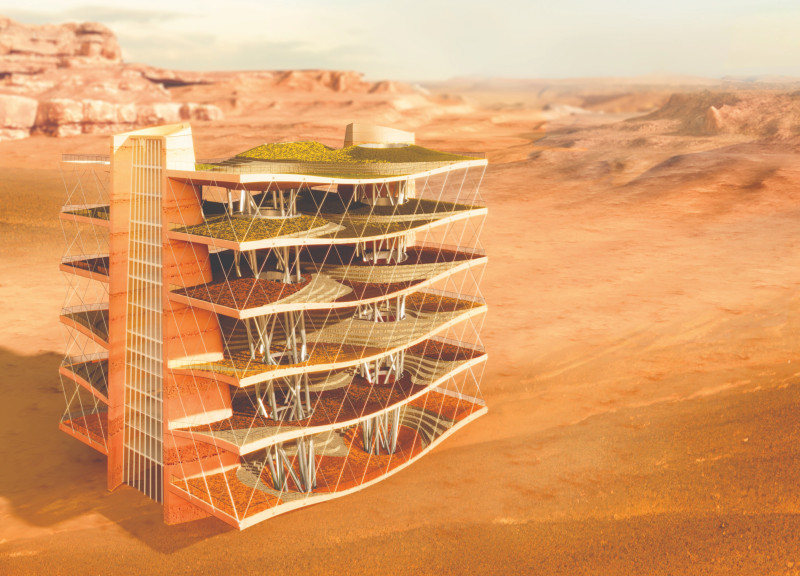5 key facts about this project
At its core, the project functions as a multifaceted space, accommodating a variety of activities necessary for the community. It is thoughtfully designed to promote interaction, efficiency, and accessibility. The architects have implemented an open floor plan that encourages flow between different areas, allowing for both communal gathering and private retreat. Natural light plays a pivotal role in the architecture, with large windows and strategically placed skylights illuminating the interior spaces and creating a dynamic interplay of light throughout the day. This conscious decision enhances not only the aesthetic value of the building but also contributes positively to the well-being of its occupants.
The project features a unique façade, which incorporates a blend of locally sourced materials, including brick and stone, harmonizing with the architectural language of the surrounding structures. The choice of materials is deliberate; they evoke a sense of place while ensuring durability and minimal environmental impact. The use of these natural materials creates an organic connection between the building and the landscape, encouraging users to appreciate the surrounding environment.
Beyond materiality, the project showcases inventive design approaches that challenge conventional architectural norms. For example, the roof structure embodies an unconventional yet functional design, promoting sustainability through the incorporation of green roofing elements. This not only provides insulation and helps manage rainwater but also enhances biodiversity, serving as a living space for local flora and fauna.
Furthermore, the building's layout considers climate responsiveness, featuring overhangs and shading devices that reduce heat gain while maximizing passive ventilation. This attention to energy efficiency reflects a broader commitment to sustainable architectural practices. Users benefit from a comfortable interior climate year-round, aligning the building's operations with contemporary environmental standards.
The interior spaces have been meticulously planned to meet various functional needs, including community meeting rooms, recreational areas, and multipurpose spaces. Each area is characterized by flexibility, enabling it to adapt to different community events and activities. This adaptability is a key aspect of the design, showcasing the architects' understanding of the evolving needs of users over time.
Architectural details throughout the project exhibit a high degree of craftsmanship and sensitivity to context. Elements such as custom woodwork, handrails, and fixtures are designed to enhance the overall coherence of the space while adding subtle sophistication. The integration of art installations sourced from local artists further enriches the communal aspect of the architecture, fostering a sense of identity and belonging among users.
In essence, this project stands as an embodiment of contemporary architectural principles that embrace sustainability, functionality, and community engagement. Its thoughtful design and execution not only fulfill immediate structural needs but also anticipate future demands, ensuring its relevance for years to come. The collaborative spirit of the project resonates through its open spaces and engaging design, inviting the community to experience and interact with the architecture on multiple levels.
For those interested in exploring the intricacies of this architectural design further, it is worthwhile to review the architectural plans, sections, and design elements that highlight the innovative approaches and thoughtful solutions implemented throughout the project. A deeper understanding of these architectural ideas will illuminate the careful considerations that have shaped this remarkable piece of architecture.


 Danxi Zou
Danxi Zou 




















